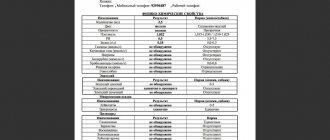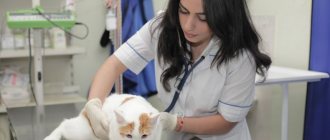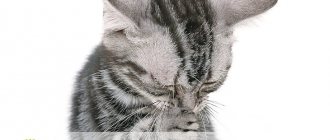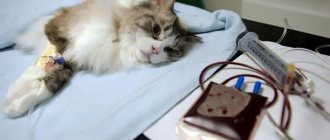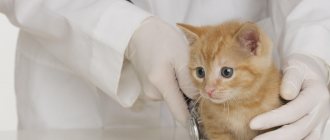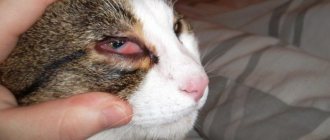Kidney disease in cats is one of the most dangerous pathological conditions that indirectly affects the normal life of a pet. The insidiousness of diseases of the renal structures is that the kidneys, due to their anatomical features, have large reserve capacities.
As a result of this, pathologies develop quickly, but symptoms arise when about 70% of the cellular structures of an organ are affected. In addition, the signs of kidney disease are very diverse, which leads to late diagnosis.
Acute pathological conditions of the renal structures quickly become chronic and disrupt the normal state of the cat’s body.
The functions of the kidneys for the body are invaluable. They filter blood from the circulation, inactivating toxic substances coming from the environment, as well as their own metabolic products. In the absence of normal filtration, toxic substances quickly accumulate in the body, poisoning the animal’s body, causing death.
Therapy for diseases of the renal structures requires long-term treatment, including the use of phytotherapeutic agents, antibiotics, immunomodulatory agents and other medications. During the treatment of kidney diseases, regular monitoring of blood counts is required, which will, in turn, allow timely adjustment of therapy.
Main causes of kidney disease in cats
Kidney disease is a common problem in cats, affecting more than 1/3 of older cats. There are a number of reasons that may affect different age groups and have different consequences. Ultimately, unfortunately, chronic kidney disease (occurs over time) or acute kidney injury (occurs suddenly) will always have the same result—the cat will be sick. Signs of illness in your cat reflect the inability of the kidneys to perform their many functions well enough.
Below you will find a brief description of the ten most common causes of kidney disease. These are the goals of your veterinarian's diagnosis.
Causes of chronic renal failure
The disease can occur for various reasons:
- Frequent renal inflammatory processes, as well as illiterate or incomplete cure;
- Infectious diseases;
- Immune diseases;
- Mechanical or toxic damage to the genitourinary system;
- Congenital kidney defects;
- Tumor processes (benign and malignant) in the kidneys or urinary system;
- Renal polycystic disease;
- Genetic predisposition.
Kidney failure in cats is a serious disease, delay in treatment of which can lead to the death of the animal. In order to extend your pet’s life by several years, if signs of disease appear, you should immediately contact a veterinarian.
Infection of the kidney tissue (pyelonephritis)
Infection of kidney tissue by bacteria or, less commonly, fungal organisms is one of the kidney diseases that may have a more favorable outcome, so your veterinarian will be on the lookout. Our goal when treating pyelonephritis is to kill the bacteria that cause destructive inflammation. This should limit the progression of any chronic kidney disease or aid in recovery from acute kidney injury. Urine bacterial culture and susceptibility can determine the type of infection and determine which antibiotic may work best.
Kidney functions
The main functions of the kidneys in cats:
- blood filtration and urine formation
- maintaining body fluid and electrolyte balance
- removal of toxins
- synthesis of erythropoietin, calcitriol, renin
- catabolism of polypeptide hormones (growth hormone, glucagon, etc.)
What leads to the “start” of this process or the manifestation of symptoms of renal failure?
- Impaired renal perfusion, dehydration (dehydration), hypovolemia (decreased circulating blood volume), arterial hypertension.
- Trauma, obstruction of the urinary tract.
- Urinary tract infections, tumors, toxins.
This disease usually occurs in older cats. But it also occurs in younger pets in some cases. For example, in case of genetic pathologies (amyloidosis, polycystic disease) or chronic viral infections (FIV, VLK, viral infectious peritonitis), as well as in case of poisoning (ethylene glycol, lily plants) and treatment with drugs that affect kidney function (NSAIDs, diuretics).
Also, some breeds have a genetic predisposition, for example, Scottish, British, Russian Blue, Abyssinian, Burmese, Siamese, and Maine Coons. The main mechanisms of the development of the disease can be explained by the fact that due to ischemia or exposure to nephrotoxins on kidney tissue, narrowing of the organ’s blood vessels leads to insufficient tissue perfusion and cell hypoxia, and metabolism is disrupted. As a result of these processes, the membrane and epithelium of the renal tubules are damaged.
With vasodilation, the hydrostatic pressure in the renal tubules decreases, and the glomerular filtration rate also decreases. As a result of these processes, diuresis decreases and reabsorption of solutes and water decreases. These processes lead to the death of nephrons (kidney cells) and a gradual decrease in kidney size and, as a consequence, to a decrease in organ function.
Renal obstruction (ureteral obstruction with hydronephrosis)
Kidney stones can fragment and travel through urine into the ureter, the long, narrow tube that connects each kidney to the bladder. They are likely to cause severe pain as they move, and significant difficulty in functioning results in the kidney if they become lodged in the ureter, causing partial or complete blockage. New urine cannot pass out of the kidney easily and it recedes, causing the kidneys to swell. If there is enough pressure, the kidneys become enlarged (hydronephrosis) and damaged. If both ureters become blocked at the same time, this can lead to catastrophic consequences, including death.
Stages of kidney failure
There are four stages of renal failure according to the international IRIS system. This is an international organization that deals with kidney diseases in animals - the International Renal Interest Society. These stages differ in the concentration of creatinine (nitrogenous bases) in the blood, which a healthy kidney excretes from the body, but a diseased kidney cannot excrete.
- Stage I, non-azotemic. In this case, the creatinine level in the blood is less than 140 µmol/l. At this stage there are no clinical symptoms, the animal can live a normal life and not show any signs of its disease.
- Stage II, mild azotemia. The creatinine level in the blood is 140-250 µmol/l. At this stage, some clinical symptoms appear, which are quite mild and do not bring much discomfort to the animal.
- Stage III, moderate azotemia. The creatinine level in the blood is 250-400 µmol/l. In this case, various clinical symptoms may appear.
- Stage IV, terminal. The creatinine level in the blood exceeds 440 µmol/l. At this stage, severe systemic lesions occur, which lead to uremia, nephrosclerosis and death.
Slags
Many household items can damage your kidneys, not just antifreeze. Petals, leaves and pollen from lilies, even water in their vase, can cause serious kidney injury when cats nibble, lick or chew the flowers or come into contact with water. This is one type of flower that you should avoid completely if you have a cat! Common OTC medications such as aspirin, other nonsteroidal drugs (NSAIDs), or prescription drugs can all cause kidney disease. Cats, who are known for being picky about food and just about everything else, will still eat pills they find in your medicine cabinet or on the floor, so keep all medications in cat-proof containers. And always discuss the use of any medications with your veterinarian.
If you have any reason to believe that your cat has been poisoned, call your veterinary emergency number immediately for help. Contact us at the following numbers:
8-495-221-81-90
8-495-221-84-70
8-499-136-19-18
Prices for appointments in our clinics
| Name of veterinary services | Unit | Price, rub |
| ⭐ Initial appointment | 1 animal | 400 |
| ⭐ Repeated appointment | 1 animal | 250 |
| Initial appointment with a specialist | 1 animal | 1100 |
| Consultation without an animal | — | 550 |
| Consultation with a doctor based on test results | 1 PC. | 400 |
| Weighing animals | 1 animal | For free |
| Additional fixation for aggressive animal behavior | 1 animal | 700 |
CLINIC REGISTRATION
HOME CALL
All our Veterinary Clinics:
For any suggestions regarding the site: [email protected]
|

